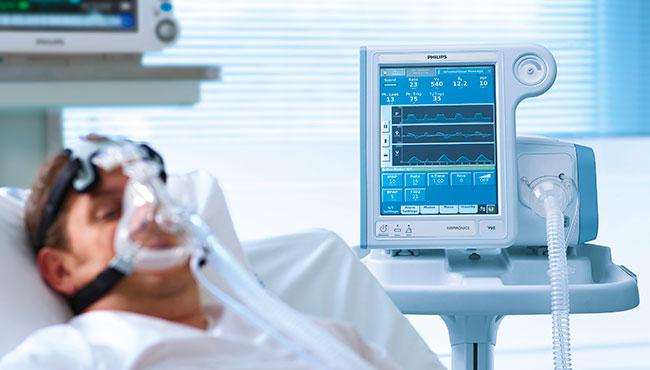Improper Use Of Ventilators Can Actually Cause Infections?
By Gavin | December 01, 2022
Ventilators are the primary treatment for sleep apnea syndrome. Although the Ventilator does not cause disease, it must be cared for, replaced, and cleaned to prevent device contamination. Continued treatment with a contaminated ventilator may lead to respiratory infections.

Accessories that may cause disease with ventilators.
Masks and tubing
Masks, mask pads, and tubing used frequently without being cleaned can become dirty and lead to a build-up of bacteria that can make you sick.
Filters
Respirators use filters that prevent foreign particles, such as dust and pollen, from entering the machine and the lungs. Without regular cleaning or replacement of the filter, you cannot effectively prevent these particles from entering your body, which can lead to illness.
Humidifiers
Certain bacteria and molds thrive in warm, humid environments. This makes the respirator humidifier an attractive environment for them. Improper cleaning of your humidifier leads to the accumulation of these harmful organisms.
Diseases caused by respirators
Without proper cleaning and maintenance of your respirator, you can develop the following diseases.
Respiratory tract infections
Pneumonia
Asthma attacks (if asthmatic)
How can you detect contamination in your respirator? Respiratory Help lists some characteristics of your Ventilator.
Bad odor from the mask or tubing
Skin irritation while using the respirator
Sore throat and runny nose when using the Ventilator
Sneezing and nasal congestion while using the Ventilator
Repeated respiratory or sinus infections with the Ventilator
Risk of using a contaminated respirator
As mentioned earlier, specific mold and bacteria can grow in warm, humid environments. While respirator humidifiers are most susceptible to this Risk. And respirator tubing can also create an environment for bacteria. Be sure to allow your respirator to dry completely before use to help reduce the risk of illness.
How to clean your respirator and contaminants
Wash the mask and tubing with warm, soapy water. Follow respirator manual guidelines for daily and weekly cleaning.
If your Ventilator has a humidifier, clean it thoroughly. A solution of water and vinegar can help remove bacteria. Do not leave water in the tank when not in use.
Use a cleaning and disinfection machine.
Disinfection machines clean all respirator accessories without using chemicals or water. They are easy to use and are a convenient solution.
How do you know if your Ventilator is damaged?
If you clean your Ventilator thoroughly but still get repeatedly sick, sneeze, or have interrupted sleep, your Ventilator may be broken.
Air leakage
Cold or dry air may irritate your airway, indicating a malfunctioning humidifier or even a broken water chamber.
Interference with sleep
Your mask may malfunction if apnea continues to occur during ventilator therapy.
Noises
If your Ventilator makes a hissing or buzzing sound, it could mean a broken line or other damaged part.
Ventilator life expectancy
If your respirator is more than five years old, it may show signs of age. Now may be the time to replace your Ventilator altogether.
BreatheHelp summarizes the respirator parts replacement schedule for you.
Replacing parts regularly can help prevent infections and ensure you receive effective ventilator therapy. The following replacement guidelines may differ from the manufacturer's recommendations.
Replace respirator masks every 3 months
Replace filters every 3-6 months
Change your tubing every 3 months
Replace your humidifier every 6 months
Replace your respirator every 3-5 years
Conclusion
You follow the manufacturer's recommendations and clean and maintain your respirator as specified. You won't have to worry about developing illness during your respirator treatment. If you have any other questions, you can interact with BreatheHelp. We will be happy to help you answer them. We also wish those who use ventilators not to give up on apnea treatment at any time. We hope you all have a happy life!